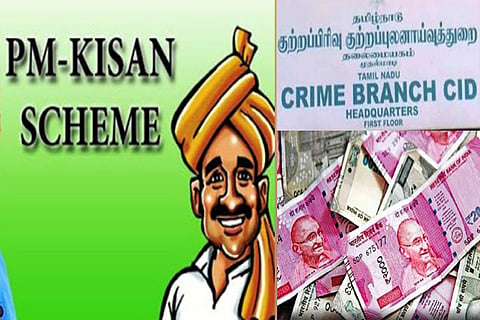

Chennai
The scheme launched in February 2019, entitles farmers belonging to the lower economic strata who pass the eligibility criteria listed out by the central government which excludes institutional landowners, income tax assesses among others. The meagre sum is deposited directly into their bank accounts.
The scam came to light in Tamil Nadu a few weeks ago when the number of beneficiaries of the scheme exceeded the beneficiaries’ list with the state government by over five lakhs. Upon investigation, authorities found that lakhs of ineligible persons had registered under the scheme and siphoned off the money. A CB-CID probe further revealed that certain officials of the State agriculture department colluded with data entry operators at private internet centres who filled online registration forms of ineligible individuals and approved them as beneficiaries using the government officials’ user ids and passwords for a small fee.
As is the case with most scams in this country, both the Centre and State pinned the blame on each other for the misappropriation of funds. The central government blamed poor handling of the scheme by agricultural officers in the state which resulted in crores of rupees meant for poor farmers falling into the wrong hands. Tamil Nadu’s Chief Minister blamed the Centre for enabling online registration of beneficiaries under the PM-Kisan Scheme without any physical verification which, as per him, led to the scam.
While both the Centre and the State must acknowledge their roles in facilitating this fraud, the fact remains that the scam was unearthed only because the number of fresh beneficiaries exceeded the state government’s count significantly. Had it not been for the greed of the corrupt officials and their cohorts, this diversion of money would never have come to light as the actual beneficiary of the scheme is, by and large, outside the umbrella of digital literacy and does not have access to what he is entitled without external help.
To believe that this is a first-of-its-kind scam in India would be naive. In every such scheme where money was directly deposited into the accounts of the beneficiaries, swindling has been a staple as the poor and marginalised in the country can neither access their bank accounts nor withdraw money from it without assistance. Even in this particular case, had the software used to register online beneficiaries and authorise payments necessitated biometric login credentials along with a geofencing-enabled infrastructure, only the authorised officials could have sanctioned the disbursement of benefits from their respective offices. And in case, if any irregularities are detected, such officials could have been brought to justice immediately.
Essentially, to prevent such instances of fraud, middlemen need to be eliminated through the setting up of more user-friendly technology and putting in place necessary safeguards and manpower to control distribution. The time has come for the Centre to invest in robust, hack-proof technologies in governance to ensure that the public gets what it’s entitled to without hindrance. Investments in such checks and balances could go a long way in ensuring that the benefits of Digital India are percolated to the poorest of the poor.
Visit news.dtnext.in to explore our interactive epaper!
Download the DT Next app for more exciting features!
Click here for iOS
Click here for Android